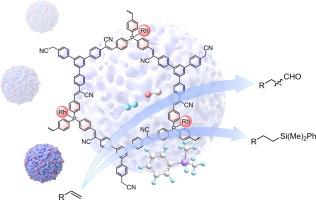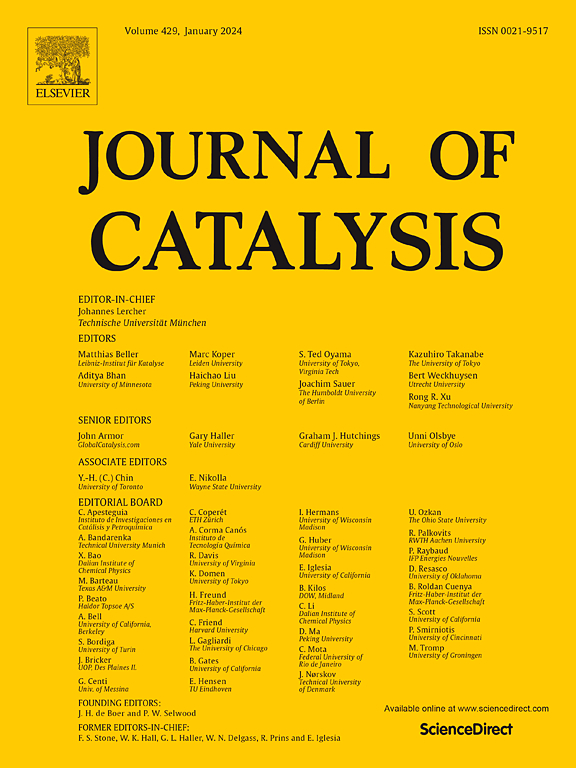Engineering atomic rhodium sites on conjugated porous monophosphine polymers for superior heterogeneously catalytic hydroformylation and hydrosilylation of alkenes
IF 6.5
1区 化学
Q2 CHEMISTRY, PHYSICAL
引用次数: 0
Abstract
Efficient rhodium-based heterogeneous catalysts with exceptional catalytic activity and efficient atom utilization are crucial for converting alkene feedstocks into valuable fine chemicals. Phosphine-functionalized porous organic polymers (POP) have emerged as promising supports for rhodium catalysts. Herein, we synthesize atomic Rh sites coordinated on conjugated porous monophosphine polymers (Rh@POP) for superior heterogeneously catalytic hydroformylation and hydrosilylation of alkenes. The Rh@POP features triphenyl phosphine-Rh coordination and alkenyl nitrile conjugation. A 2.3 % Rh@POP catalyst (Rh mass loading 2.3 wt%) exhibits exceptional activity and selectivity in mild hydroformylation and hydrosilylation of alkenes. The turnover frequency (TOF) reaches 5549 h−1 in hydroformylation of 1-octene. Remarkably, this catalyst maintains consistent reactivity over 6 recycling runs. The high dispersion of rhodium atoms, phosphine coordination, and alkenyl nitrile-containing POP framework contribute to its outstanding performance. This study offers insights into designing single-atom heterogeneous catalysts with high activity and recyclability, effectively combining the merits of homogeneous and heterogeneous catalysis.


求助全文
约1分钟内获得全文
求助全文
来源期刊

Journal of Catalysis
工程技术-工程:化工
CiteScore
12.30
自引率
5.50%
发文量
447
审稿时长
31 days
期刊介绍:
The Journal of Catalysis publishes scholarly articles on both heterogeneous and homogeneous catalysis, covering a wide range of chemical transformations. These include various types of catalysis, such as those mediated by photons, plasmons, and electrons. The focus of the studies is to understand the relationship between catalytic function and the underlying chemical properties of surfaces and metal complexes.
The articles in the journal offer innovative concepts and explore the synthesis and kinetics of inorganic solids and homogeneous complexes. Furthermore, they discuss spectroscopic techniques for characterizing catalysts, investigate the interaction of probes and reacting species with catalysts, and employ theoretical methods.
The research presented in the journal should have direct relevance to the field of catalytic processes, addressing either fundamental aspects or applications of catalysis.
 求助内容:
求助内容: 应助结果提醒方式:
应助结果提醒方式:


